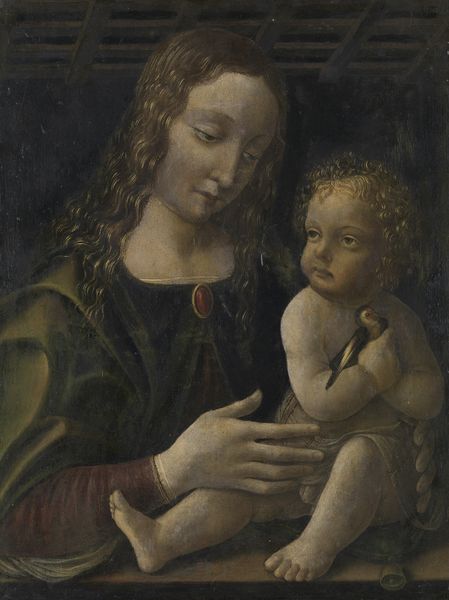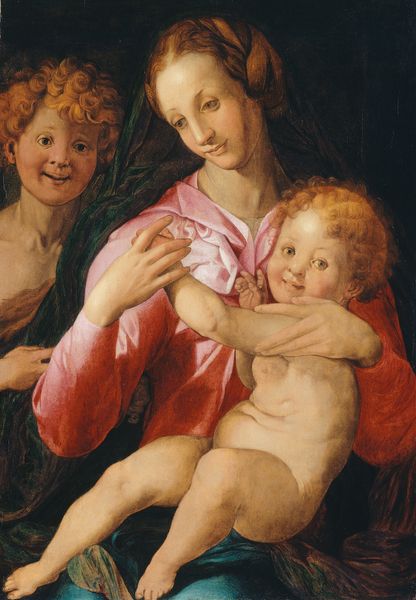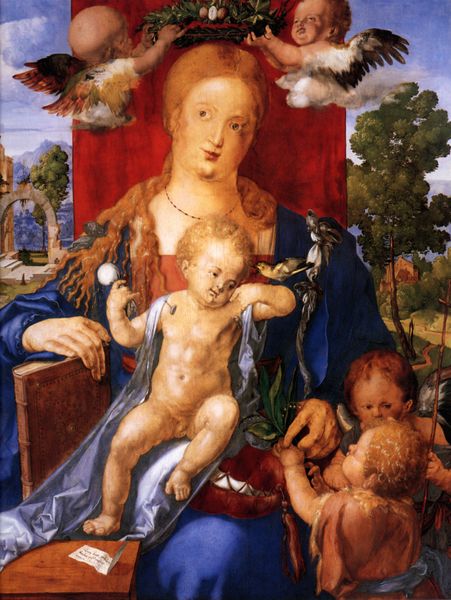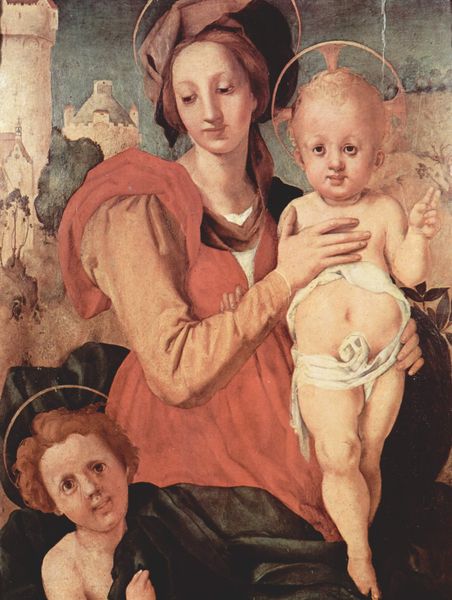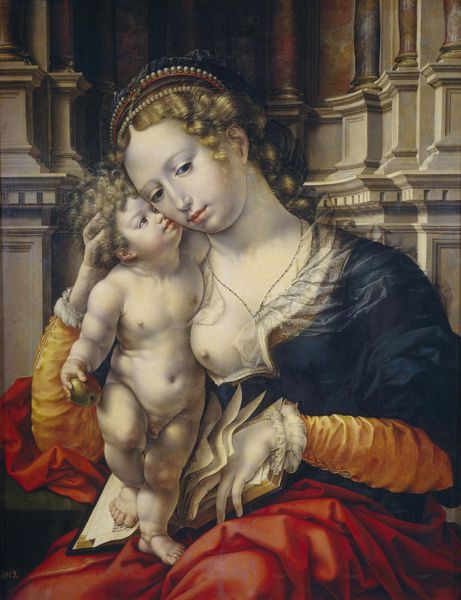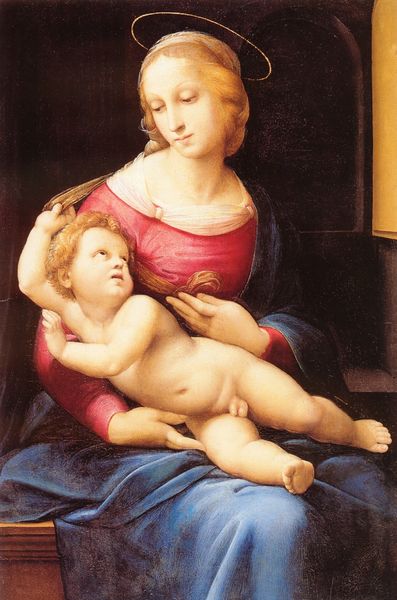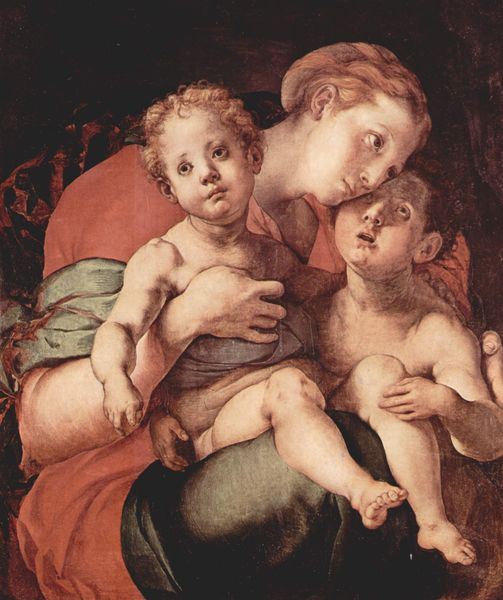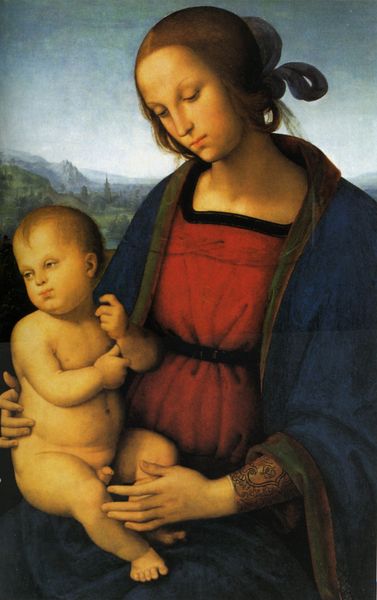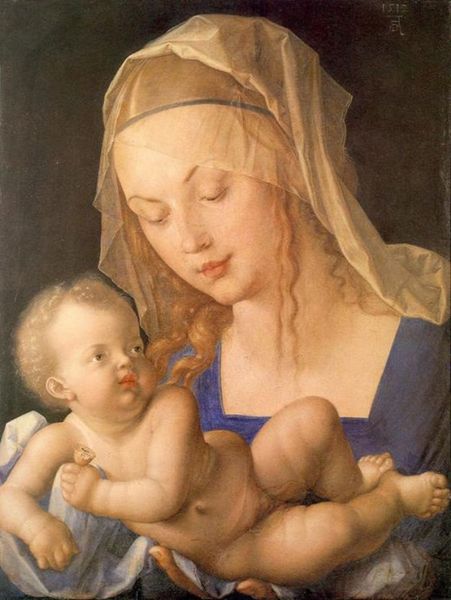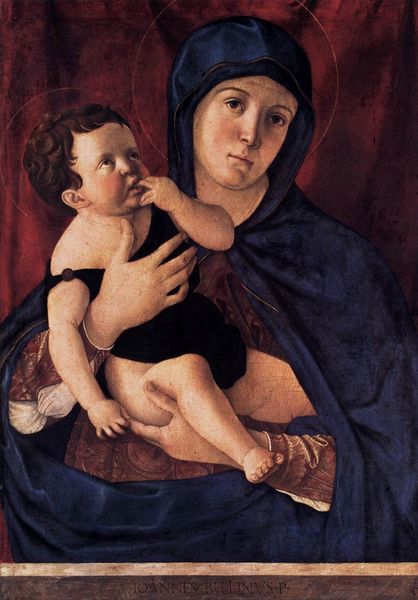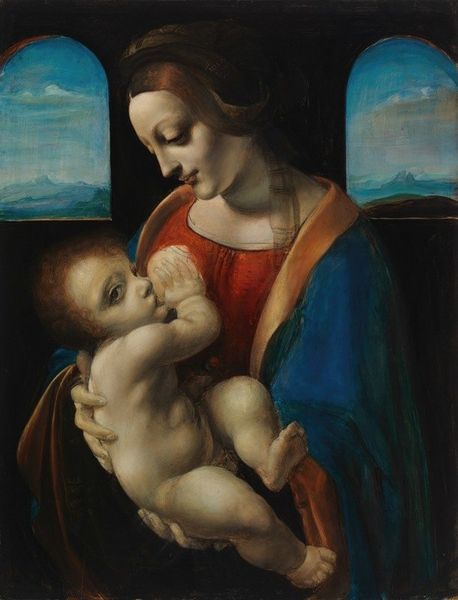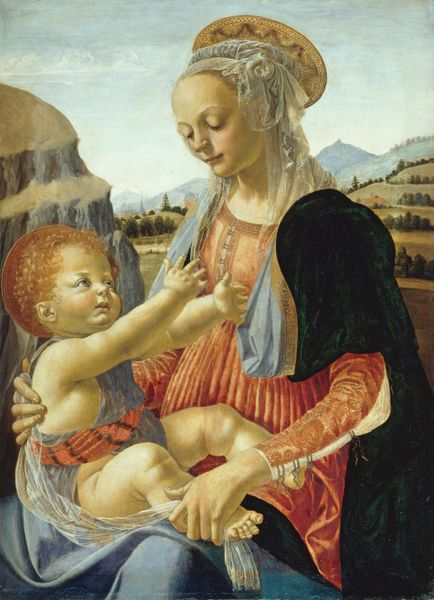
The Virgin and Child (The Madonna of the Rose) 1480
0:00
0:00
oil-paint
#
portrait
#
high-renaissance
#
oil-paint
#
figuration
#
oil painting
#
underpainting
#
italian-renaissance
#
portrait art
Copyright: Public domain
Giovanni Antonio Boltraffio painted 'The Virgin and Child' in Milan, though the exact date is unknown. This tender portrayal reflects the era's religious devotion and the Renaissance interest in humanism. During this period, the Church was a major patron of the arts, shaping artistic production and reception. Boltraffio's work adheres to the established iconography of the Madonna and Child. However, the artist infuses it with a naturalism aligned with Renaissance ideals. The softness in the figures and the subdued emotion reflect a move toward a more relatable and human depiction of religious figures. Studying Boltraffio's social context and the history of religious patronage helps us understand the cultural meanings embedded in his artwork. Examining period documents, religious texts, and the biographies of patrons and artists, reveals how social conditions influenced the creation and interpretation of such works. The meaning of this artwork is deeply contingent on its historical and institutional setting.
Comments
No comments
Be the first to comment and join the conversation on the ultimate creative platform.
